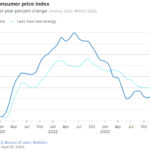Despite robust job growth and low interest rates, U.S.
homeownership rates remain at a 50-year low due to issues with affordability, crushing student loan debt, harsh credit conditions and tight inventory supply.
This is the focus of Fisher Center for Real Estate and Urban Economics’ and Berkeley Haas School of Business’ new study, “
Hurdles to Homeownership: Understanding the Barriers,” which was released during U.C. Berkeley’s Sustainable Homeownership Conference in recognition of the National Association of Realtors’ National Homeownership Month.
“The decline and stagnation in the homeownership rate is a trend that’s pointing in the wrong direction and must be reversed given the many benefits of homeownership to individuals, communities and the nation’s economy,” said NAR 2017 President William E. Brown in a statement.
Brown, NAR Chief Economist Lawrence Yun and Berkeley Hass Real Estate Group Chair Ken Rosen were among a number of experts who headed the conference and helped pinpoint five main barriers that keep stopping homeowners from completing their goal:
1. Post-foreclosure stress disorder
The study noted that the more than 17 million who either lost their home to foreclosure or lost their jobs during the recession have financial PTSD, which makes them skittish toward homeownership and other serious financial investments.
Experts suggest targeted programs and workshops about financial literacy and mortgage debt could quell any fears former owners and would-be owners have about buying a home.
2. Mortgage availability
Since the Great Recession,
buyers with good to excellent credit scores aren’t getting approved for the same low mortgage loan rates given before the recession. Restoring lending requirements to accessible standards would be helpful in making homeownership easier for creditworthy buyers.
3. The growing burden of student loan debt
Real estate professionals consistently wonder: “Where are all the
millennial homebuyers?”
According to the study, enormous monthly student loan payments are making it nearly impossible for young buyers to afford mortgage payments.
As
NAR found in a survey released last year, student loan debt is delaying purchases from millennials, and over half expect to be delayed by at least five years.
4. Single-family housing affordability
Low inventory and booming home prices are making it harder for buyers to find affordable single-family properties. If things don’t turn around, the Rosen Consulting Group forecasts that affordability will fall by an average of nearly 9 percentage points across all 75 major markets between 2016 and 2019, with approximately 5 million fewer households able to afford the local median-priced home by 2019.
5. Single-family housing supply shortages
“Single-family home construction plummeted after the recession and is still failing to keep up with demand as cities see increased migration and population as the result of faster job growth,” noted RCG in the study. “The insufficient level of homebuilding has created a cumulative deficit of nearly 3.7 million new homes over the last eight years.”
The research says that higher housing starts will be the main solution to inventory troubles.
“Those who are financially capable and willing to assume the responsibilities of owning a home should have the opportunity to pursue that dream,” said Brown.
Email Marian McPherson
Source: inman.com














